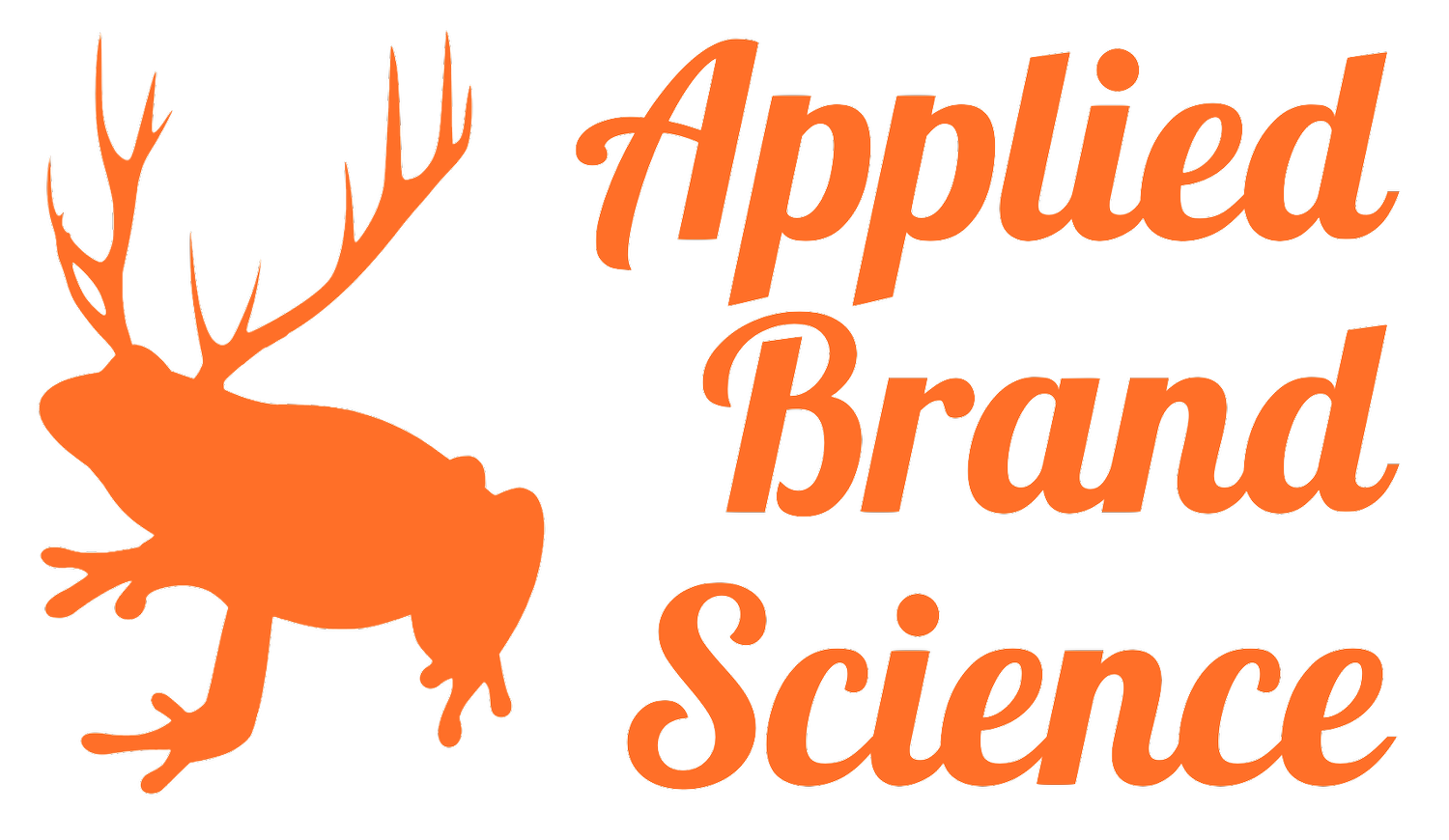
What’s the breakout brand of the century?
Like, which one is the most unlikely brand in one of the most challenging categories?
I say Tito’s vodka.
I mean, think about it:

Do you know HOW your customers like to buy?
Like, how they physically like to GET and PAY for your products or services?
Domino’s, f’rinstance, recently revealed that there’s only a 15% overlap between their carryout customers and their delivery customers.
That’s right: only 15% of their customers do both carryout & delivery. The rest are like Capulets and Montagues: never the twain shall meet.
It’s as if the shopping style alone has segmented the world into two entirely different markets for pizza.
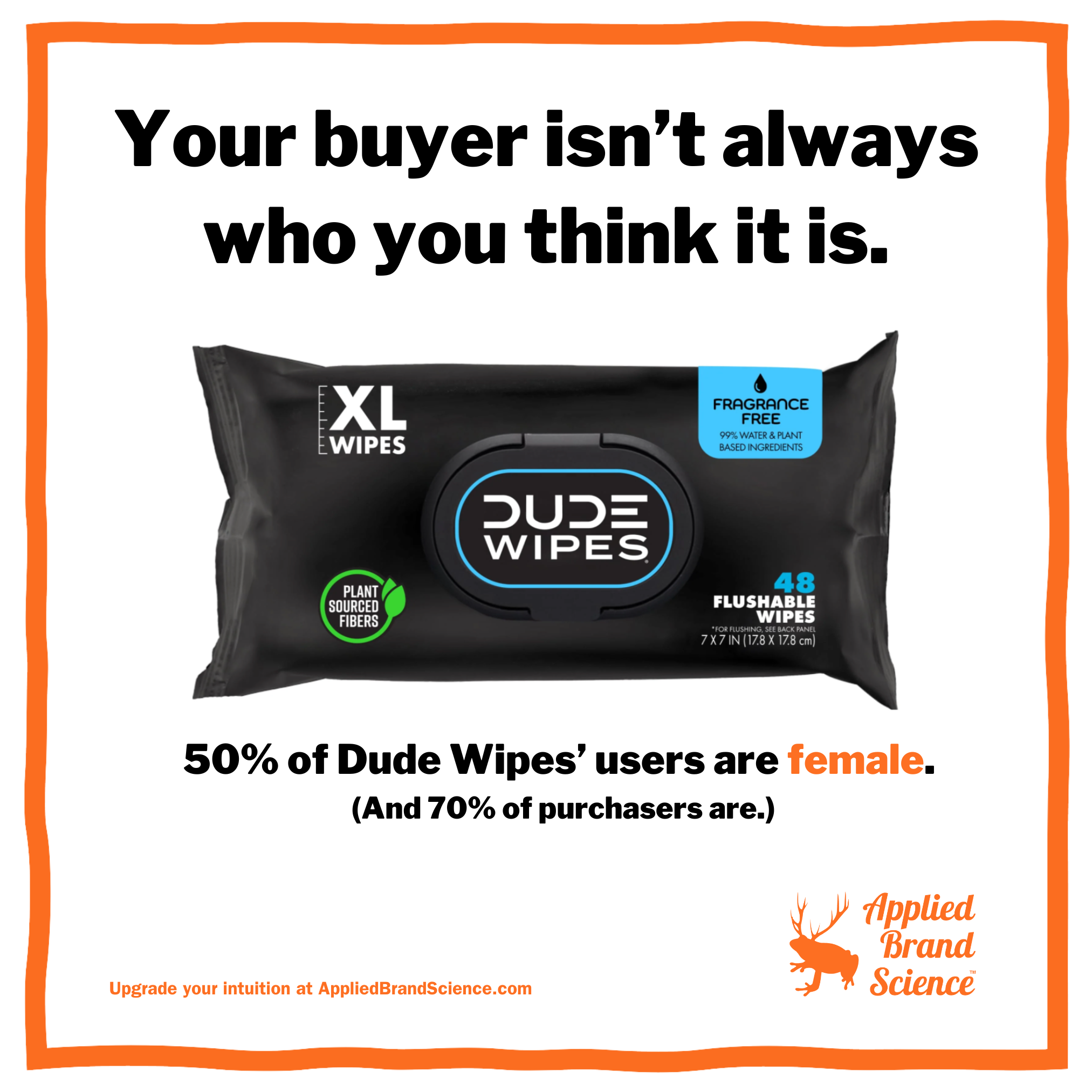
Who REALLY buys Dude Wipes?
Like, how well does the brand know its buyers?
You might’ve seen Dude Wipes. Launched in 2012, it is, quite simply, flushable wet wipes for dudes.
But is that tremendous growth really due to the cause? Maybe. But maybe not.
So you’d think the brand would, uh, rub women the wrong way. But you’d be wrong.

How is Dove’s “Real Beauty” like Geico’s Gecko?
We tend to think Dove’s campaign is a stellar example of purpose-driven marketing. But is it?
Yes, they’ve done amazing viral content on real beauty & self-esteem. (Including the recent one on beauty standards in AI-generated images.)
And yes, they’re one of only 11 CPG brands in the world with sustained growth over the past decade (according to Kantar.)
But is that tremendous growth really due to the cause? Maybe. But maybe not.
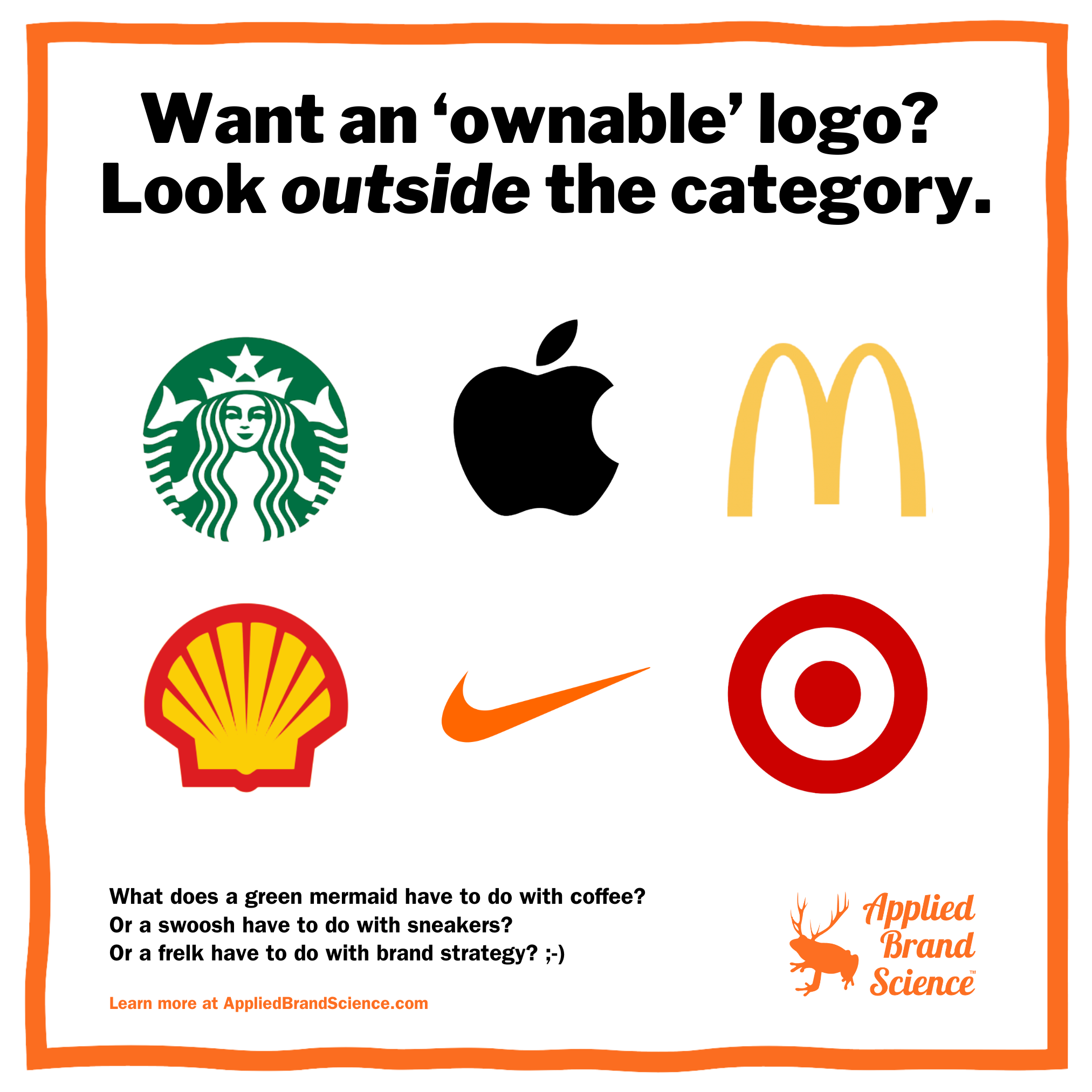
Want an ‘ownable’ logo?
Like, do you want your logo to never be confused with your competition?
Turns out there’s an interesting thing you can learn from some of the best in the world.
See, the first instinct for many logo designs is to do something “relevant” to the category.

Are Olympic medals a banana curve?
Like, is the medal count a bell curve, a banana curve, or something else?
No, this isn’t marketing per se. But it’s a fab example of this universal pattern.
The USA sits atop the medal count with 126 medals. China is next with 91. Then Great Britain with 65, and host nation France with 64.

Is churn normal in B2B industries?
B2B relationships have a reputation for being long and stable.
A common belief is, companies find a supplier they like — equipment, taxes, SaaS — and they stick with them. Because switching stinks.
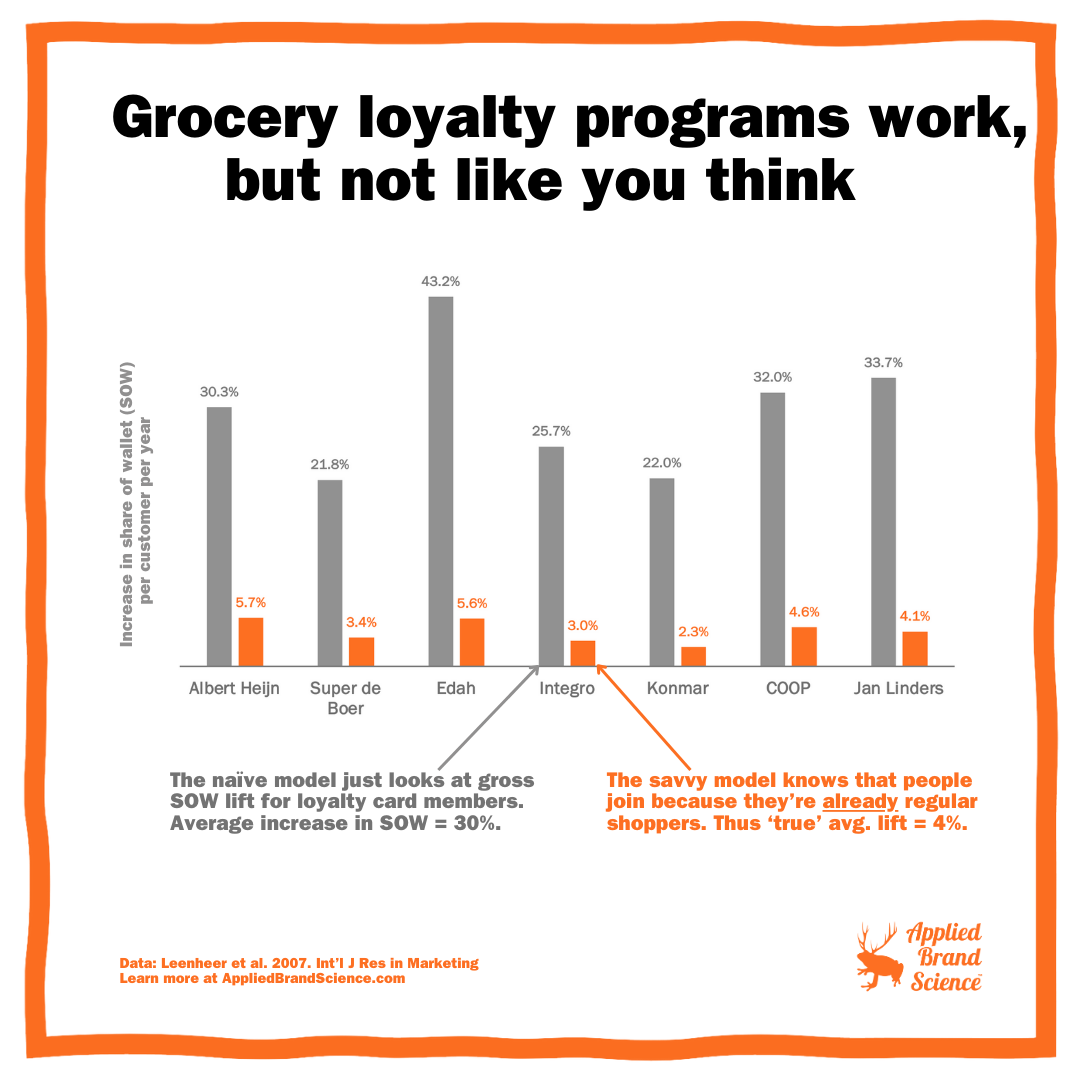
Do Grocery Loyalty Programs Work?
Dr. Jorna Leenheer & Co looked at data for 1,900 Dutch households over 2 years, covering 20 supermarkets and all 7 grocery loyalty programs.
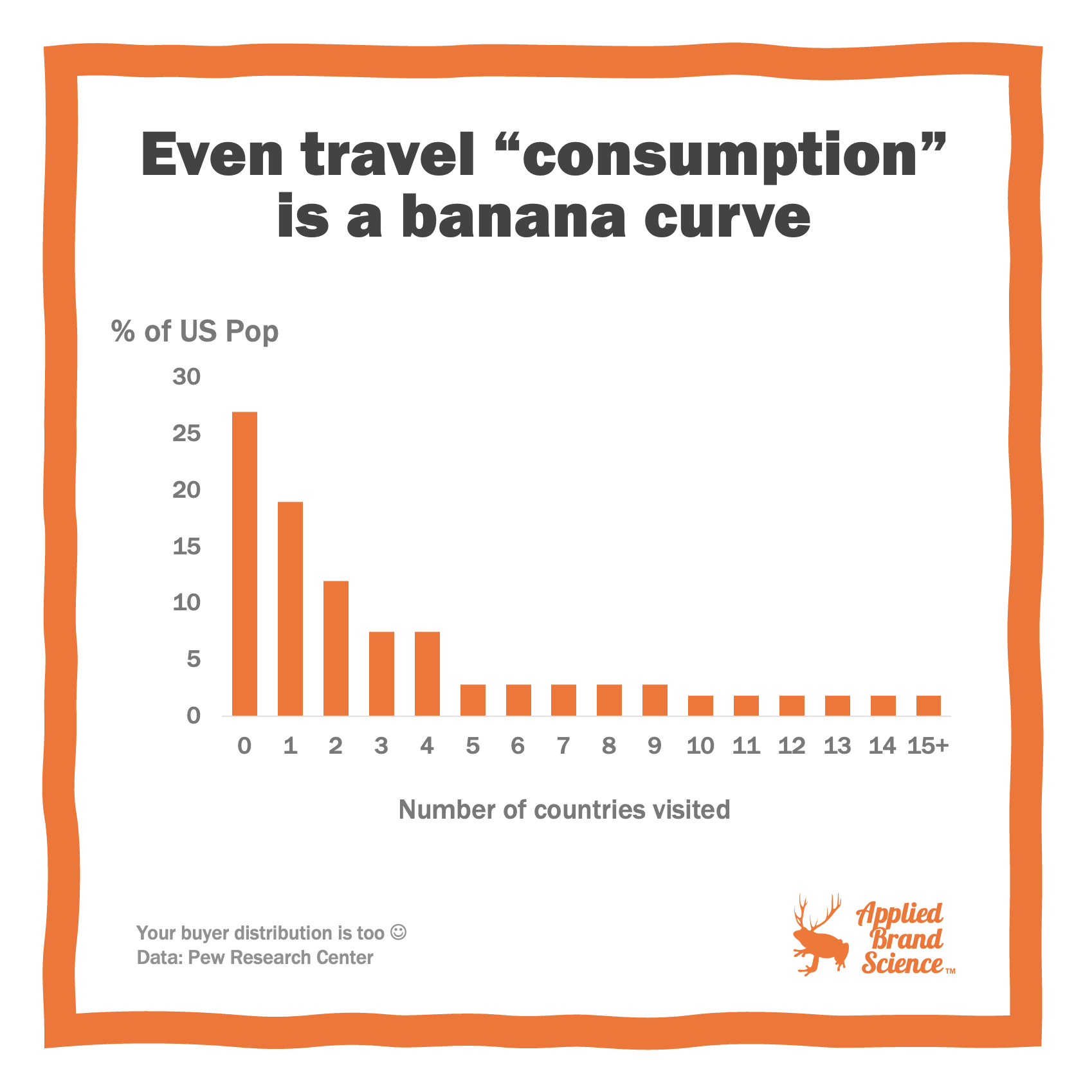
Does travel ‘consumption’ follow brand laws?
Unless you have one client and it’s the Dept of Defense, you probably have a banana curve of buyers. It might be when measured over years for B2B accounts, or for weeks for coffee shops. But it’s quite the universal pattern.

Do brands grow via loyalty or penetration?
It’s an age-old debate: acquire new customers, or try to get current customers to buy more?
Let’s look at Dove, one of the very very few global grocery brands to post 10 straight years of growth.
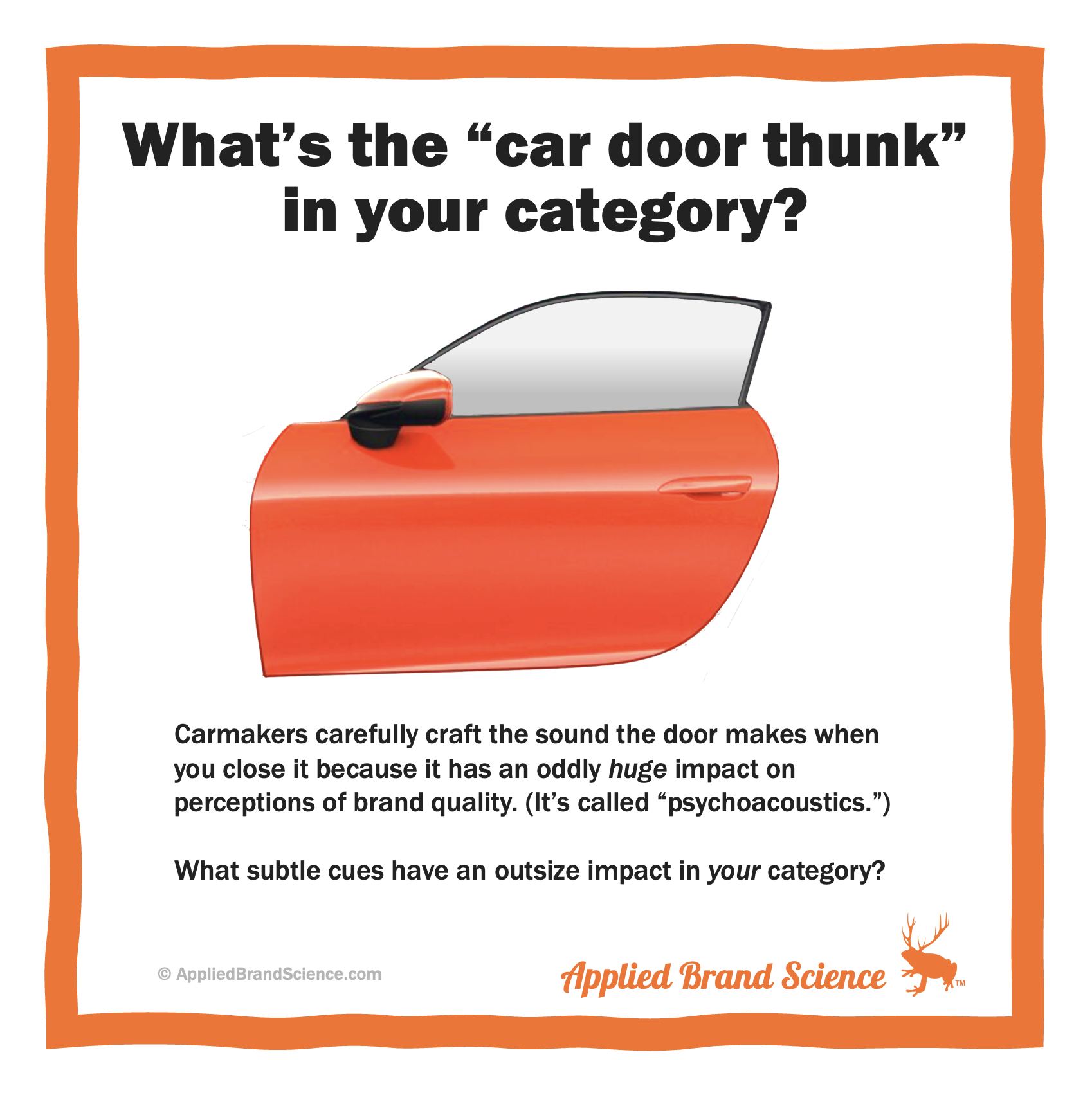
What’s the “car door thunk” in your category?
It’s an open secret that the sound the car door makes when you close it has an oddly huuuge impact on how you assess the car’s quality.
This is because our brains are leaky: impressions we get in one area bleed into other areas. It’s called the halo effect.
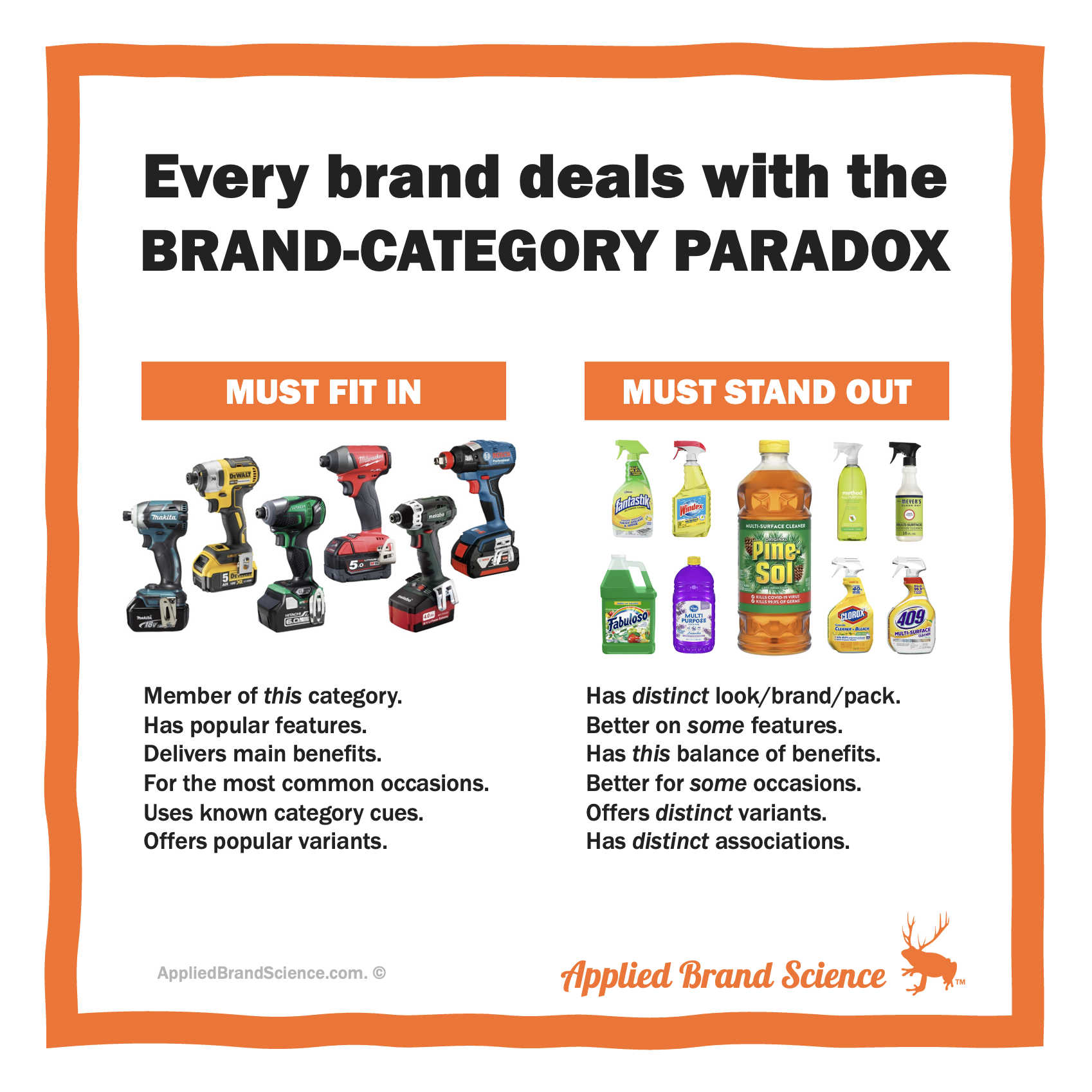
How Do You Handle the Brand-Catagory Paradox?
How do you stand out while fitting in?
This is the Brand-Category Paradox: how to deliver category basics but in distinct, branded ways. Fortunately there are lots of Levers you can pull to help handle it.

Want better recall for your ads?
After getting a lot of “I don’t remember” and “uh, I think it was for Lindt…”, they did some math to find out how much brand recall would change given different numbers and types of mentions. (Go math!)
Increasing the number of mentions increased the chance of recall for all types of mentions, from a 17% boost to a 56% boost.

Is customer satisfaction overrated?
Like, does it really matter if people say they’re ”highly satisfied” with your brand?
It turns out the evidence is… mixed.
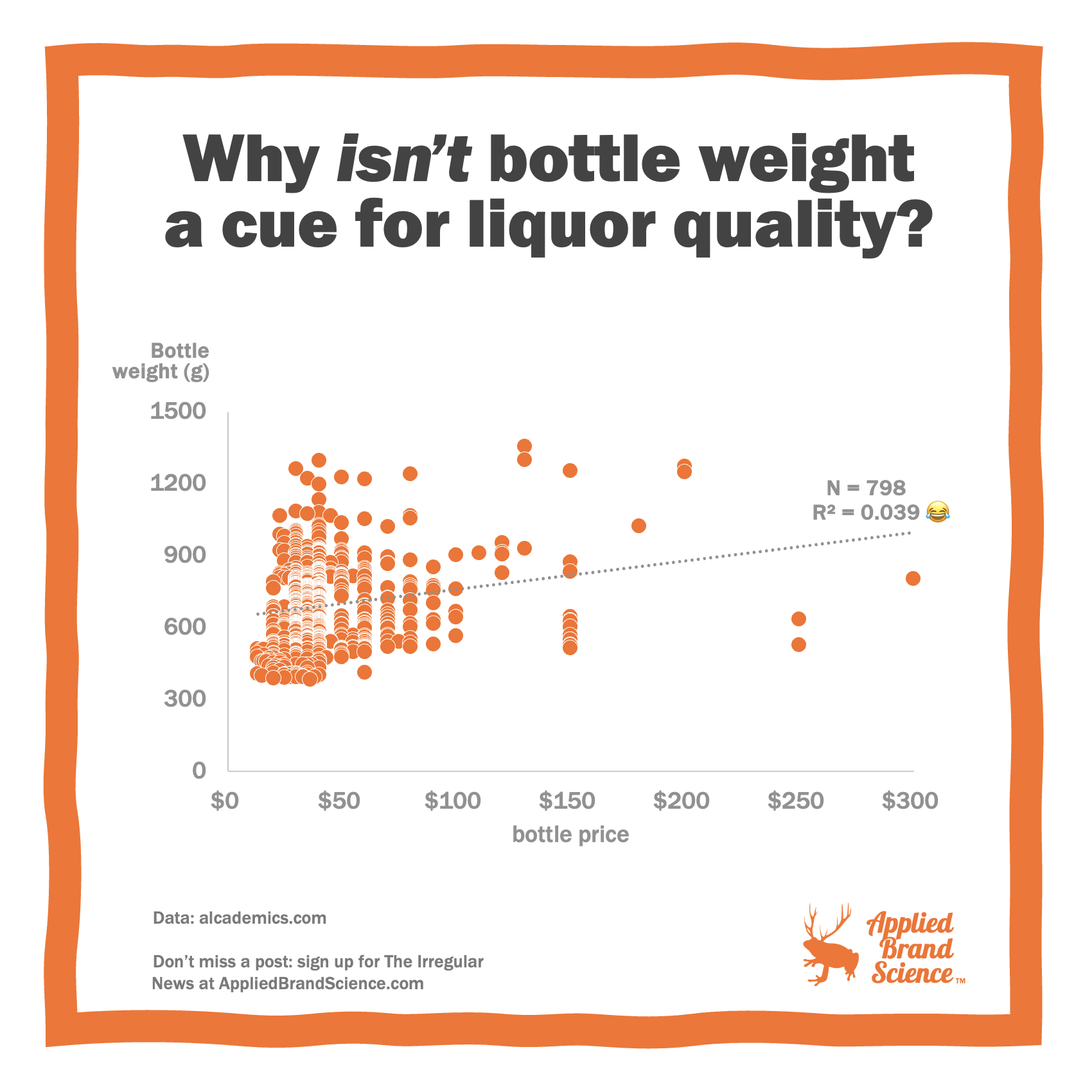
Are expensive spirits sold in heavier bottles?
Shouldn’t nicer spirits be sold in thick-walled, faceted, hefty bottles?
Turns out there’s less than a 20% correlation between price & weight. (The Rsq of the linear regression is a measly 0.039. 😂)
As a marketer and brand scientist (and the proprietor of a speakeasy), it baffles me that bottle weight isn’t used more often as a symbol of quality for the liquid inside.
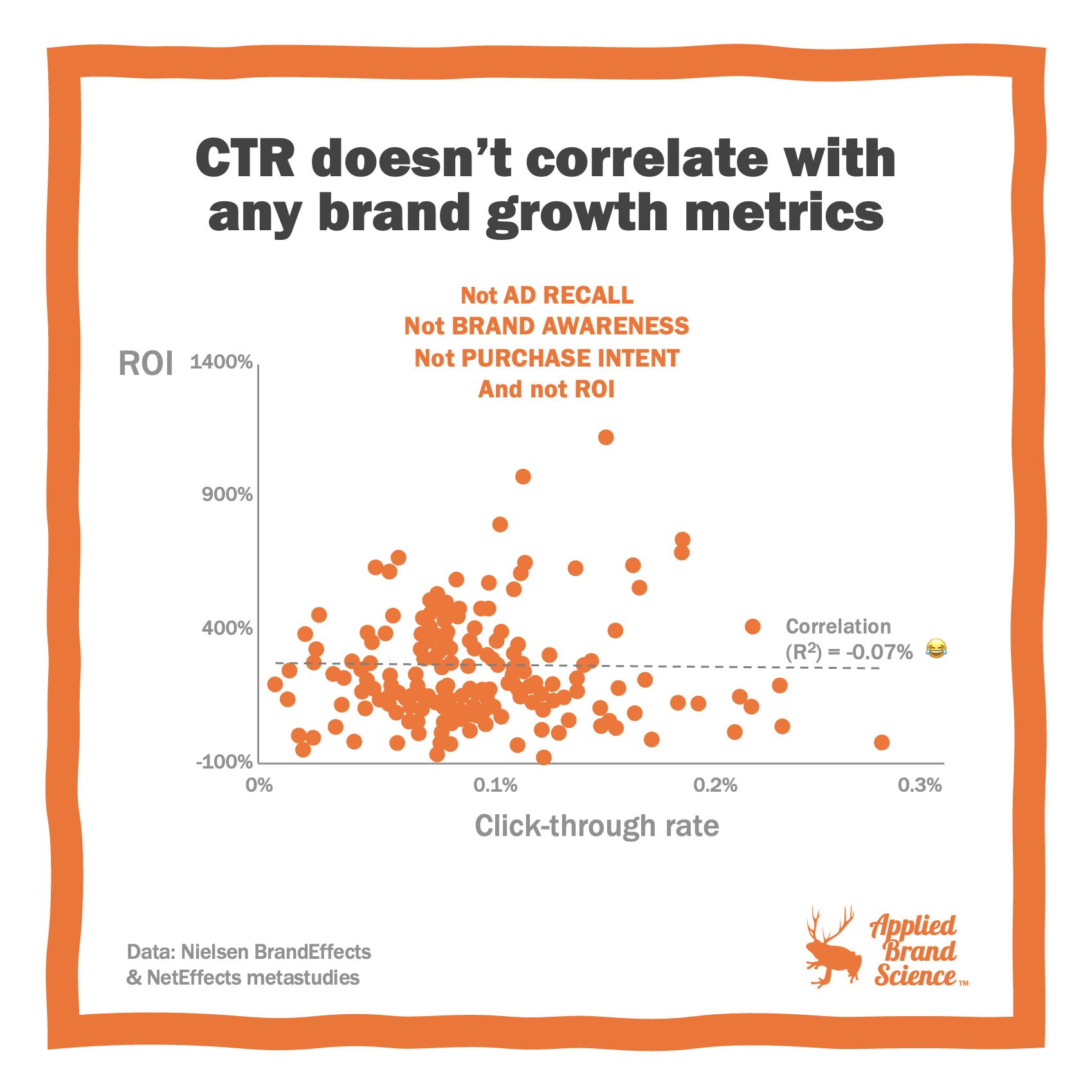
Does click-through rate actually matter?
Did CTR correlate with ad recall? Nope. Less than 1%, in fact.
How about brand awareness? Nope. Or purchase intent? Nope nope. Both less than 1%.
But surely ROI? Ha. ROI had a -0.07% correlation with CTR. 😂😂😂
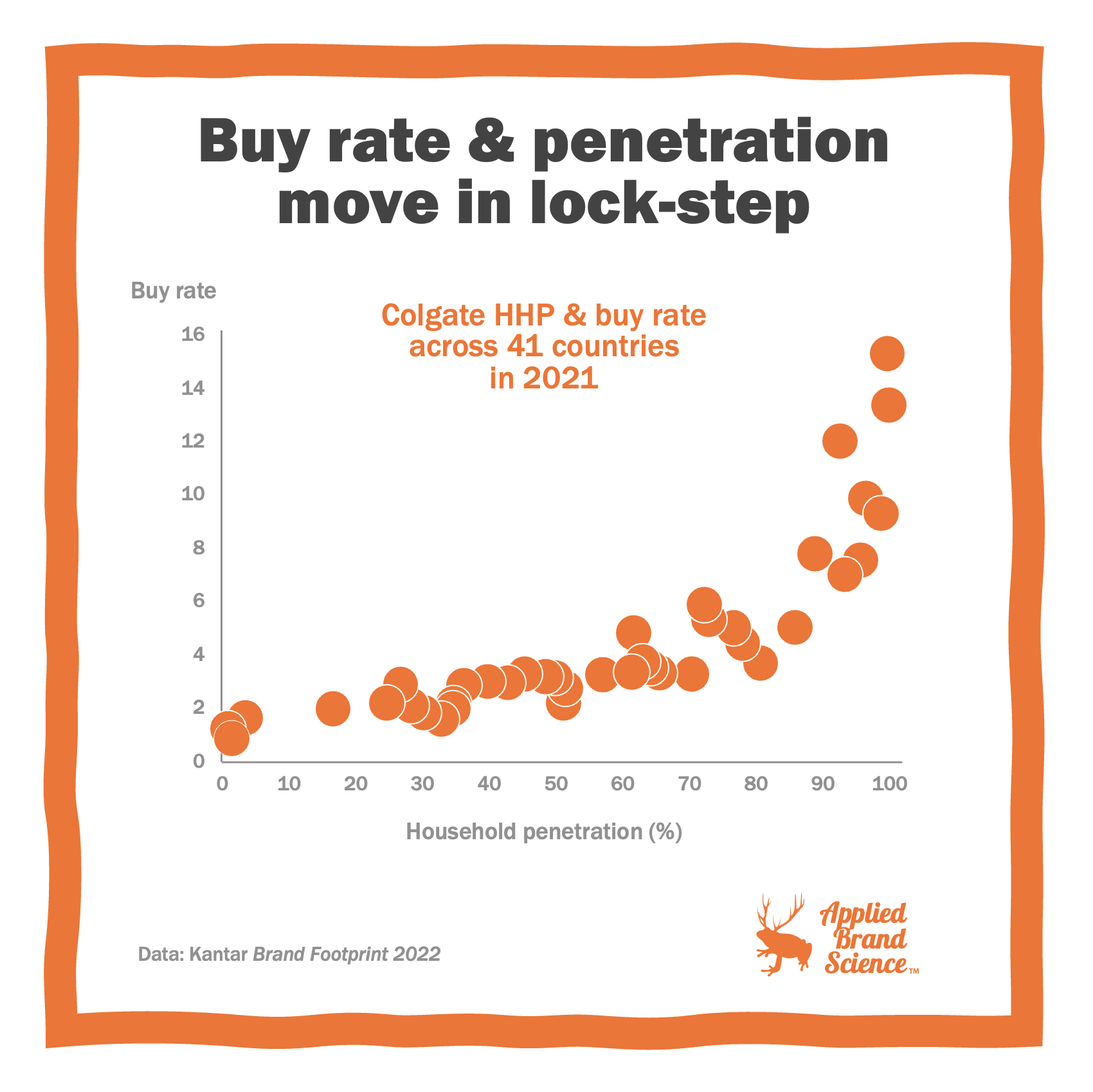
Are there small brands with high “loyalty”?
Like, are there brands with low household penetration but high buy rate?
The TL;DR: no. Not really. Like hardly ever. Like nearly never.
F’rinstance, Colgate is for sale around the world. But it’s in a different situation in each country.
Turns out, penetration moves in lock-step with buy rate. Like, really really tightly too.
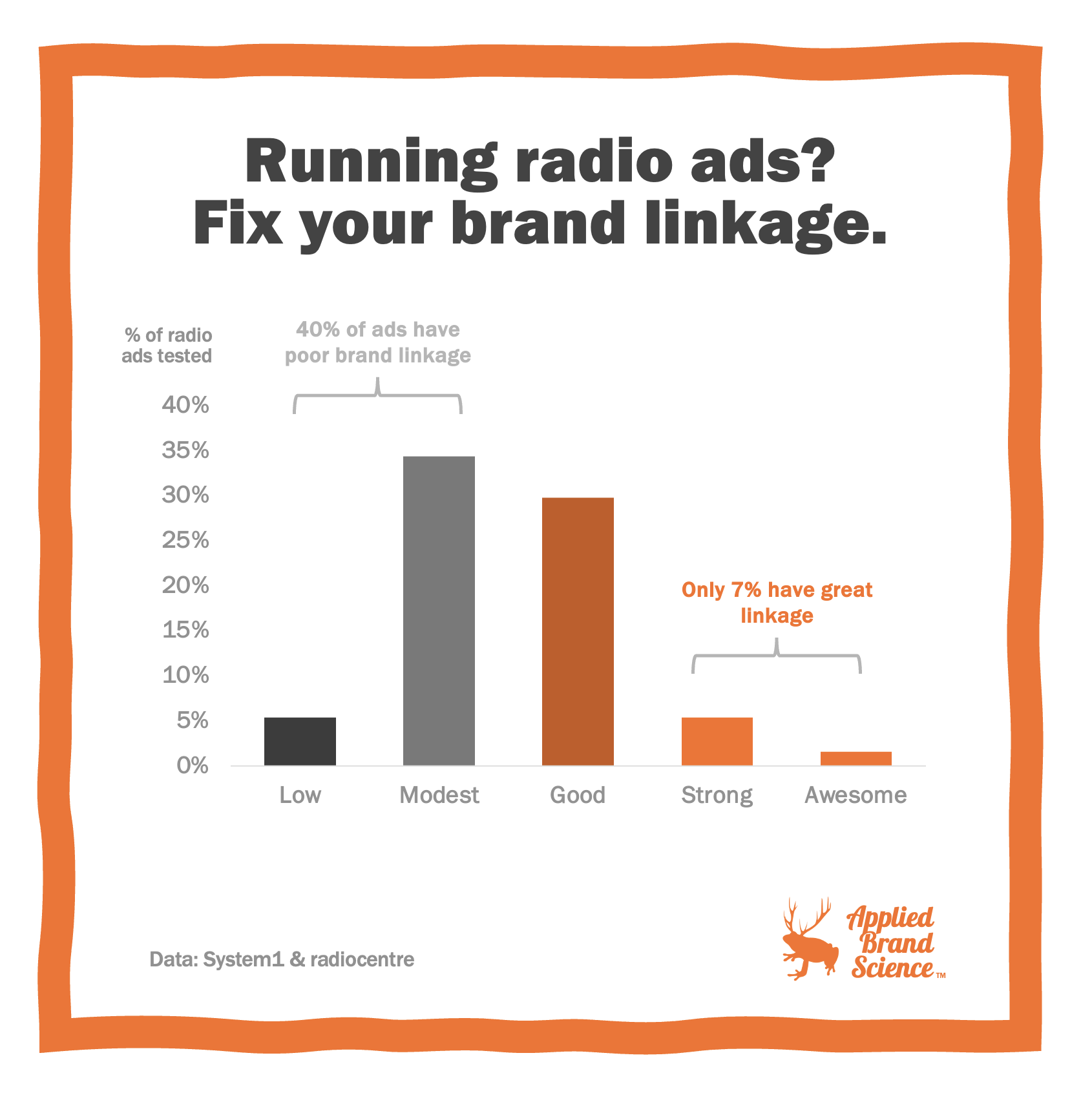
Running radio ads? Fix your brand linkage!
If someone hears your ad on the radio, can they even say what brand it’s for?
System 1 Research & Radiocentre tested 131 radio ads in the UK.
Shockingly — I mean, it’s _right_after_the_ad_played_ — 40% of the ads had poor linkage.
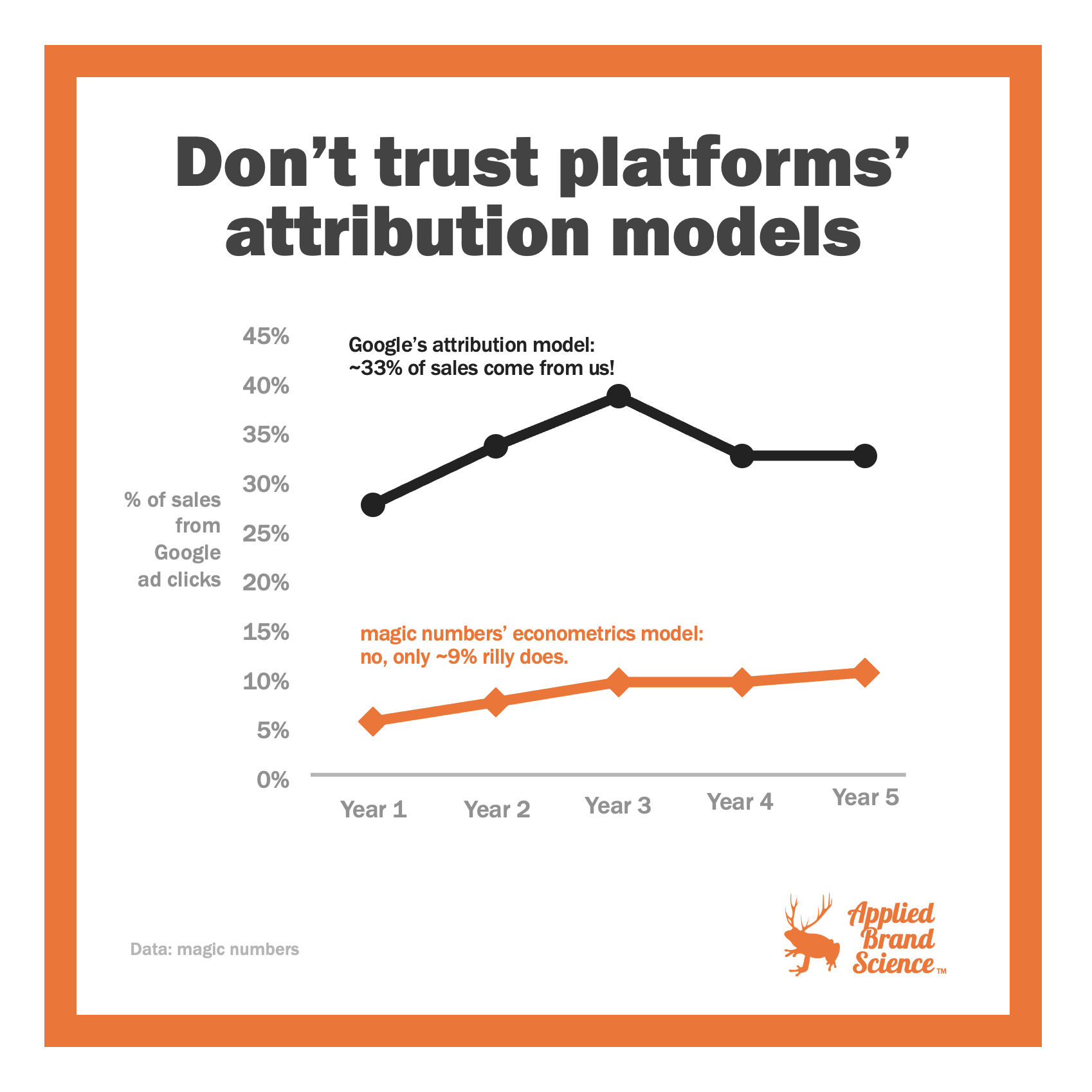
Should you trust in-platform attribution models?
Attribution is tricky. Last-click attribution is also, uh, sketchy. Why?
1. It often confuses correlation with causation. Did views CAUSE sales or just correlate with them?
2. It rarely accounts for 10 or 12 other factors that are likely involved.
3. It’s got conflict-of-interest built in: of COURSE a platform wants to claim brand lift or sales impact or whatnot.

Do Small Brands Follow the Law of Double Jeopardy?
Small brands are weird. How weird are they?
In the kombucha category, f’rinstance, big brands like GT’s have higher penetration AND higher ‘loyalty’.
This is the Law of Double Jeopardy. It’s an empirical regularity, with nice equations that predict it quite, uh, nicely.

